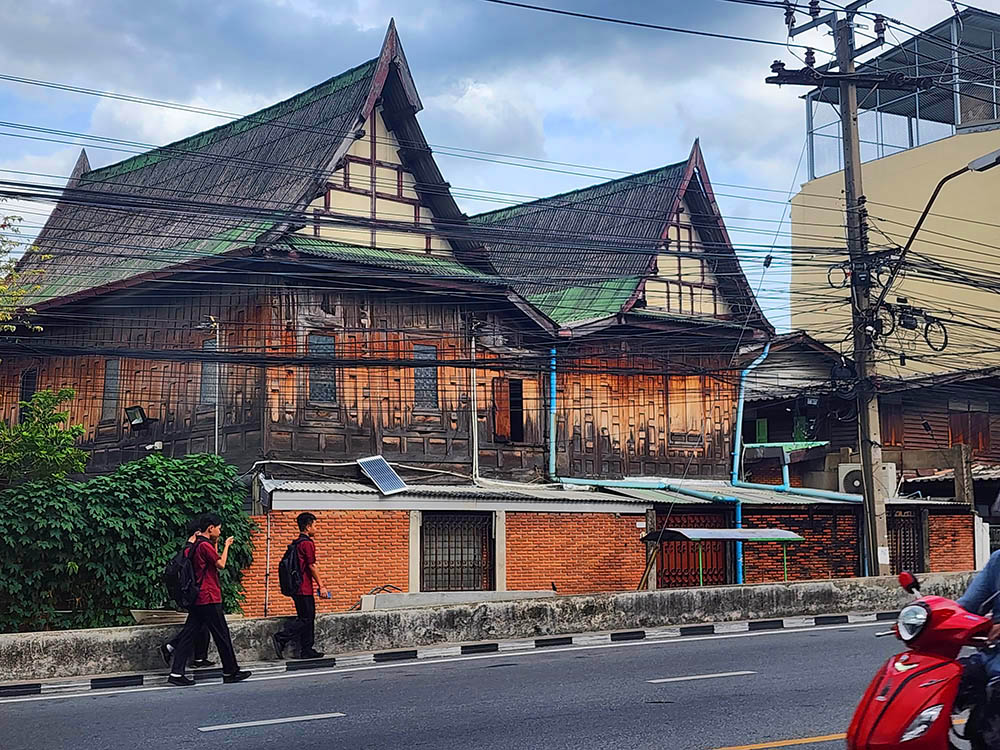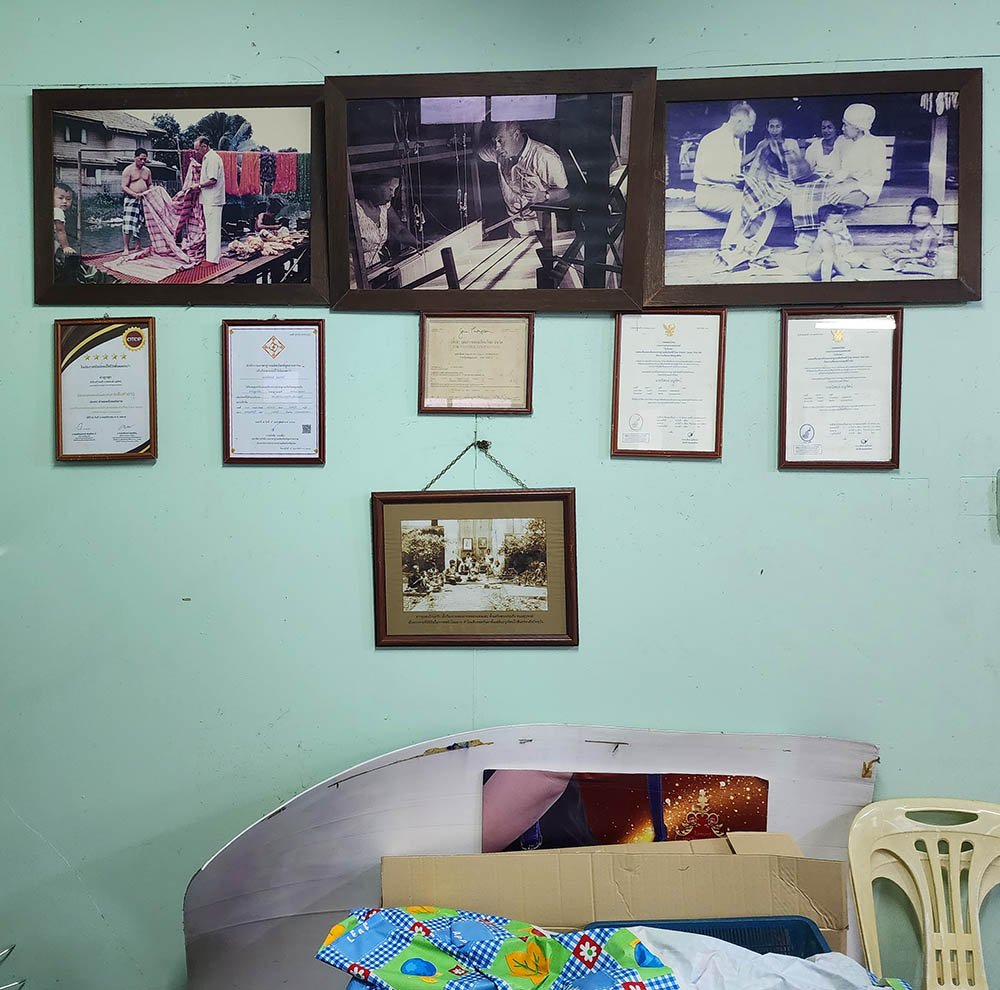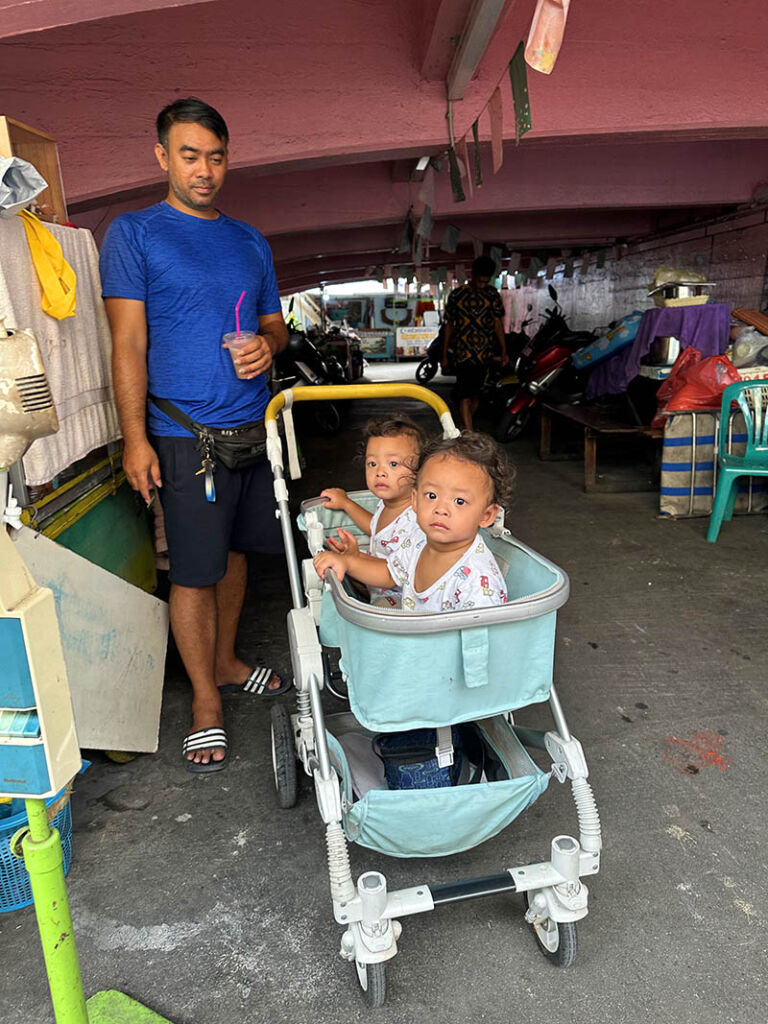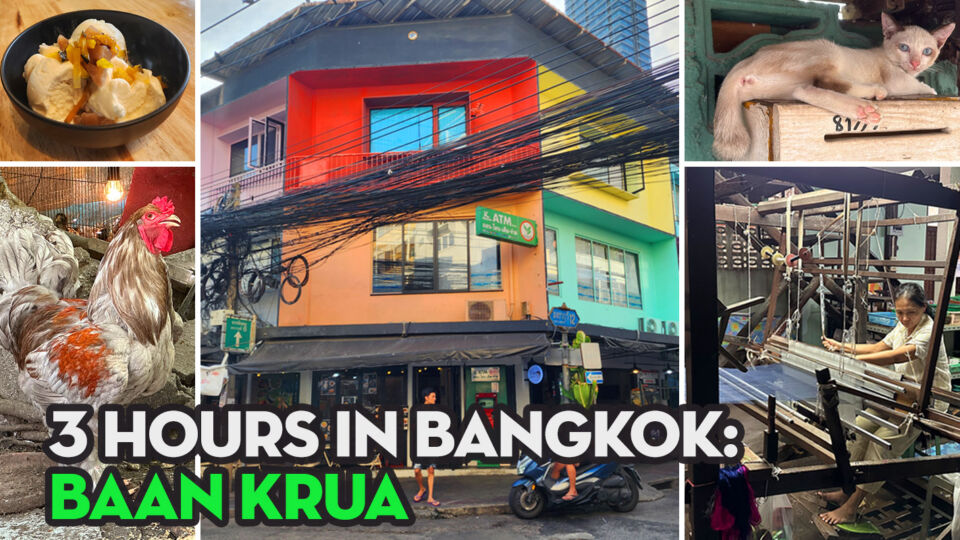Go across a canal from Bangkok’s swanky speakeasies and megawatt malls to find a tangle of tiny lanes weaving through a community long written off as forsaken and impoverished.
While visitors flock to tour the Jim Thompson House, few cross a nearby footbridge to where it all began in a claustrophobic maze of homes once filled with looms weaving silk. Decades after Thompson’s mysterious 1967 disappearance, the perception endures that Baan Krua’s prosperity and future vanished along with its foreign benefactor.
But this rustic labyrinth today is full of surprises, from a home to monster chickens and puppets to remarkably friendly old-timers ready to guide visitors to the few artisans still weaving silk on antiquated teak looms.
“We are not a poor community,” said Meena, the 54-year-old secretary of Jamiul Khairiyah, one of the many mosques in Bangkok’s oldest Muslim community. “That’s what many people tend to get wrong.”
Visiting Baan Krua
Read on to find where to find handwoven silk for much less than in stores, a near-mythical monster chicken farm where a man airbrushes superheroes and talks to puppets, as well as places to grab southern-style chicken or delicious coconut milk ice cream.
Baan Krua is divided into three neighborhoods. From Baan Krua North, cross nearby Banthat Thong Road into Baan Krua West, which sits across the canal from Baan Krua South.
The neighborhood is a great and safe place to walk and take photos. Please note that many things are closed Mondays, but the amazing cats found in every crevice are always ready to have their pictures taken.
While residents acknowledge that Thompson’s Thai Silk Co. hasn’t done much for the community which literally wove its success, no one seems to resent this. In fact, many people still speak in reverent tones of their personal connections to “Mr. Jim.”
One is Niphon Manuthas, who spoke proudly of the past beneath old photos of Thompson visiting his parents at their factory.
“Mr. Jim Thompson came here every morning,” he said in English, noting his family’s 235-year history in Baan Krua. “My family was a big family” that spread throughout the neighborhood and once operated 50 looms.
The 75-year-old owner of the Phamai Baan Krua points out that while many credit Thompson with modern Thai silk, his ancestors brought their expertise from Cambodia hundreds of years ago.
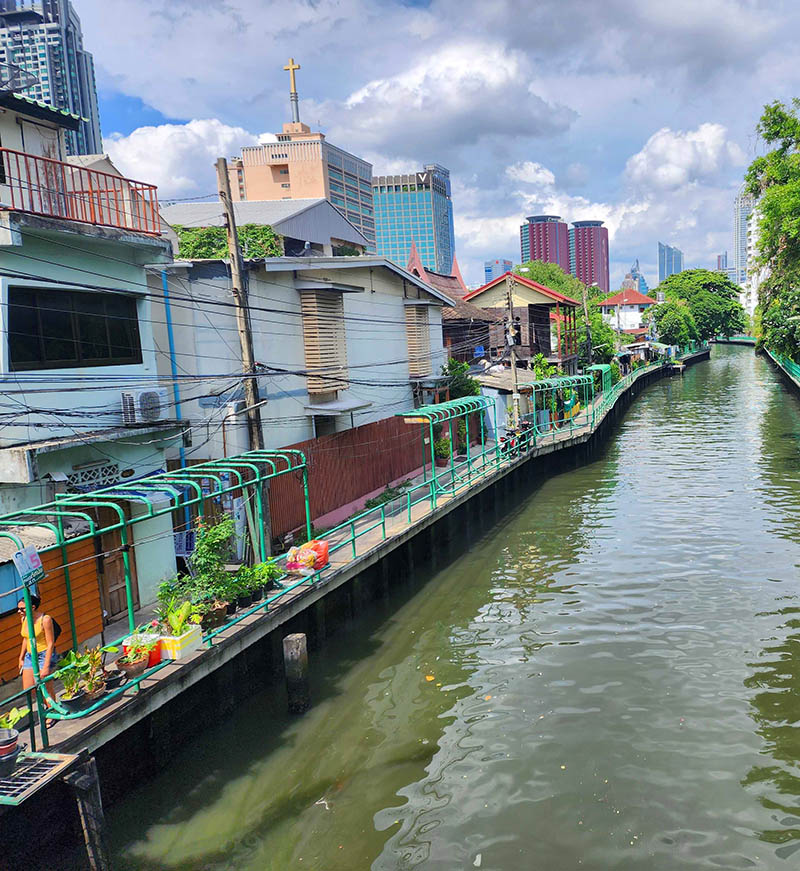
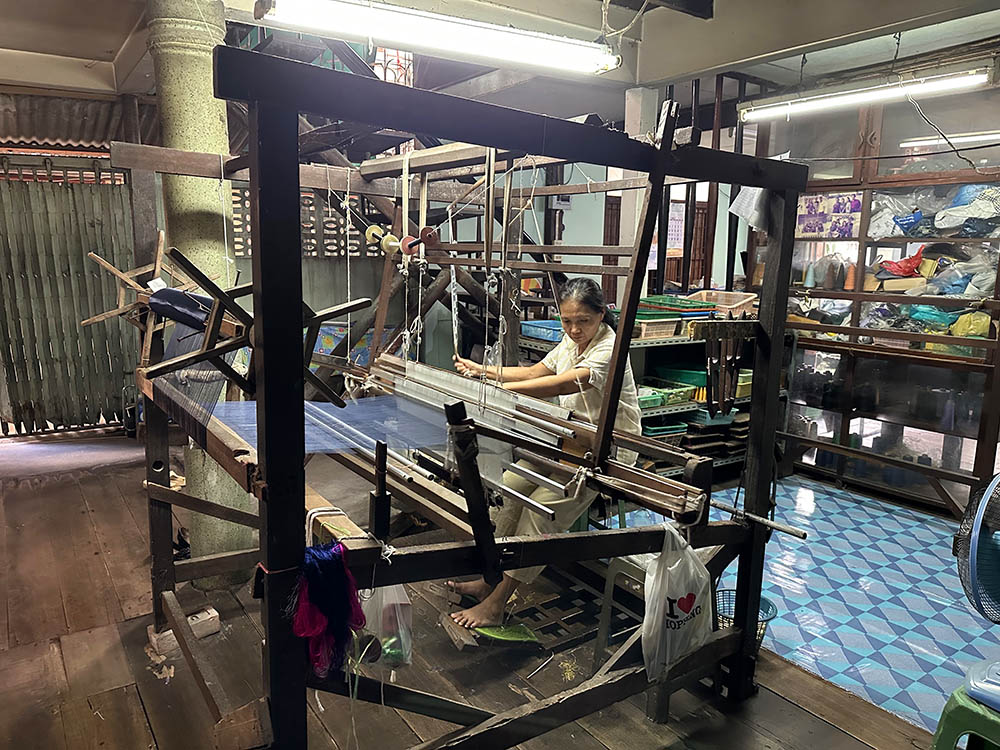
It was during the 18th century that a grateful King Rama I invited Khmer Muslim descendants of the Cham Kingdom to resettle in what is now Baan Krua. They brought their expertise and tools, Niphon noted. They wove silk for generations, though it wasn’t really a thing with Thais until Thompson’s marketing talents turned it into an international sensation sought by every traveler.
Thompson may be gone and his company’s production moved outside Bangkok, but the looms of Niphon and his wife Weena Manuthas still run. On a recent afternoon, a 54-year-old woman named Siriphon was threading heddles and sliding the shuttle, which returned thwack, thwack, thwack with each weft thread laid in a row. For 20 years, she has woven silk in pretty much the same way it was done 230 years ago when the Cham came in the late 1700s. Today, the silk comes from north of Bangkok in Phetchabun province.
Niphon said most silk-weavers retired after orders stopped coming from Thai Silk. But his clan survived and thrived because they were especially talented artisans whose skills were established long before Thompson came knocking, he added.
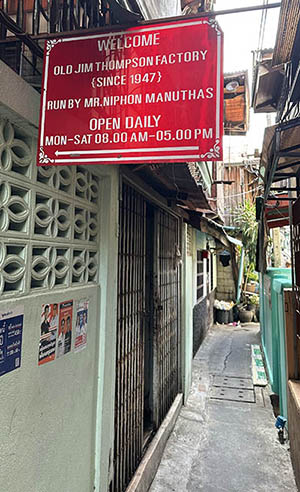
Where to find it
At Baan Krua Silk factory, guests can walk in and see silk loomed the same way it has for centuries. Handwoven silk scarves and ties are sold for much less than elsewhere. Coming over the footbridge from the Jim Thompson side, turn left and look for a sign at the tiny Soi 9 leading away from the water. Please remove your shoes inside.
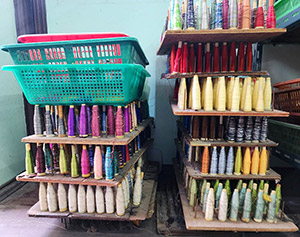
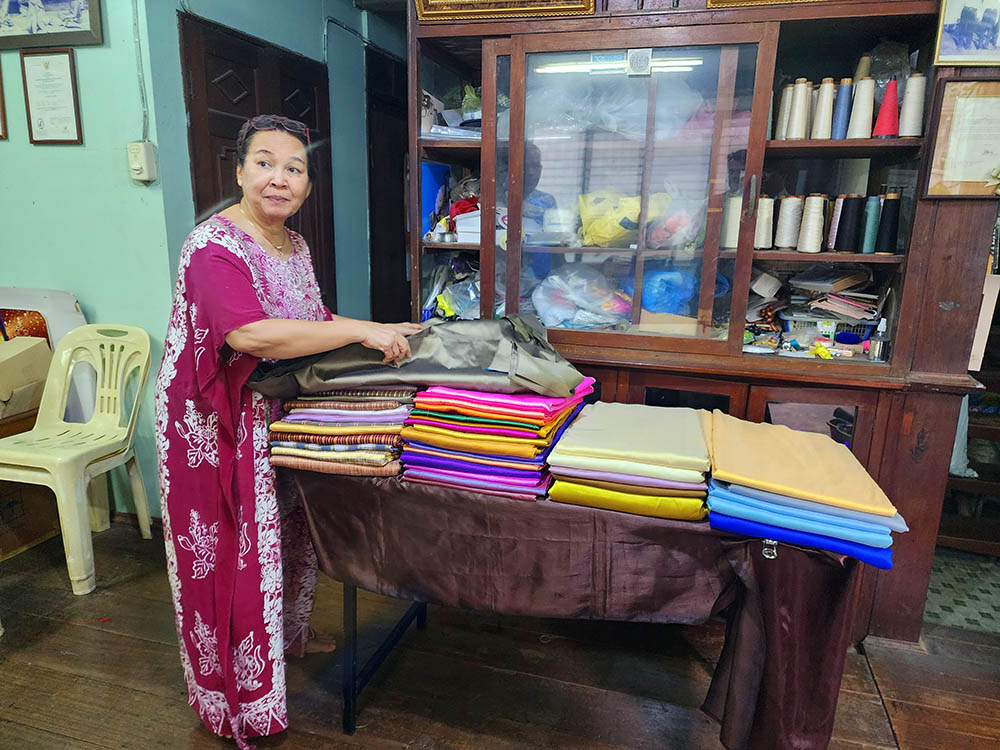
Siriphon weaves silk on an antique team loom as it has been done for generations in Baan Krua. https://t.co/3fUPDSQKai pic.twitter.com/dbifj9RDnP
— Kenneth Todd Ruiz (@kennethtoddruiz) June 23, 2023
But they are the exceptions. A short walk away, Manop Milgnam looked up from a motorcycle helmet he was airbrushing to note that Baan Krua’s community identity is slipping.
“People come and go,” he said. “But the young people aren’t interested in their community.”
Manop is an artist who does custom airbrush designs on motorcycle helmets. Helmets adorned with Hanuman, Iron Man, storm troopers, and Kamen Rider line the walls.
Just next to his open air studio wander a gaggle of geese lorded over by some enormous waterfowl and very cocky chickens who preen their fabulous plumage in between dust-ups.
That’s right, Manop’s airbrush shop is also home to what he calls the Monster Chicken Farm.
And if that wasn’t enough, he is a master puppeteer who performs weekly at Chatuchak Weekend Market, where his puppet Mr. Bones teases passers-by while his politer operator silently strums a guitar.
Time to eat
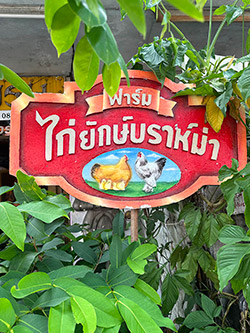
A visit to Baan Krua would not be complete without a stop by the Monster Chicken Farm. It’s a good idea to go visit the ferocious fowl when hungry, as most food offerings are found nearby along Banthat Thong Road.
In fact, after kow-towing to Manop’s chunky chickens, reassert your supremacy a few steps away at the Jabir Halal Restaurant, where sticks of southern, milk-marinated chicken a la Songkhla are sold for THB10. If it’s after 5pm, the nearby A-bae Burger cart is smashing out everything from a beef cheeseburger on a charcoal bun (THB55) to a burger with chicken, cheese, egg, and ham for THB60. A set with fries is only THB90.
After eating, visit Tai at her recently opened Coconut Milk Ice Cream shop. Refuse your instincts to be basic with Oreo and go with Thai toppings here. Pumpkin and lotus root were great on this creamy coco cream.
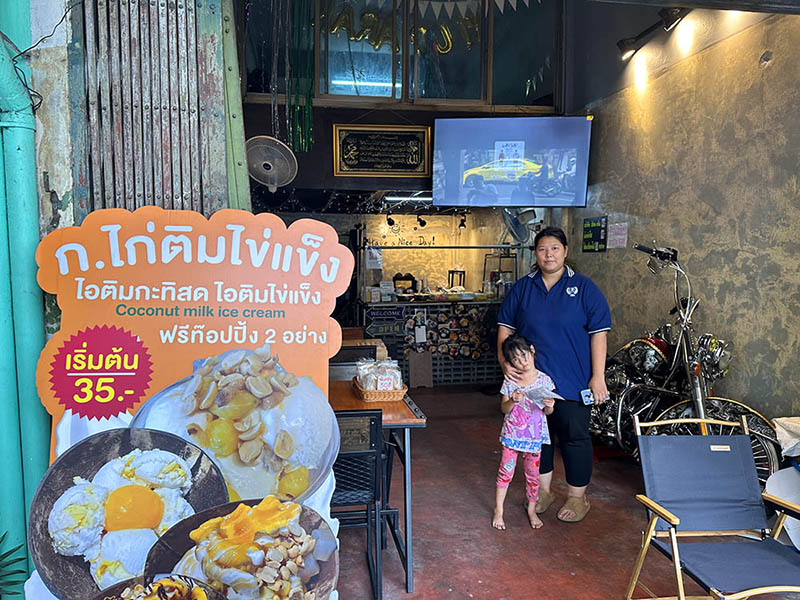
Perhaps the most fun to be had in Baan Krua is just getting lost in the tiny, wandering lanes. One should be mindful that these are people’s homes, but visitors stumbling into some impromptu food preparation, construction, or laundering are usually met with smiles.
There is an old cemetery without English signage that is easy to stumble into. Try not to. It’s for locals only, and even non-Baan Krua Thais aren’t welcome.
Pro tip: Keep an eye out for all of the cats watching you pass by.
Over at the Jamiul Khairiyah Mosque, Meena the secretary said the community is seeking ways to hang onto its identity.
They’ve settled on one way to remind Baan Krua people about who they are – through their stomachs.
“Anyone from Baan Krua knows Baan Krua food by taste,” she said. “They will know it’s their cooking.”
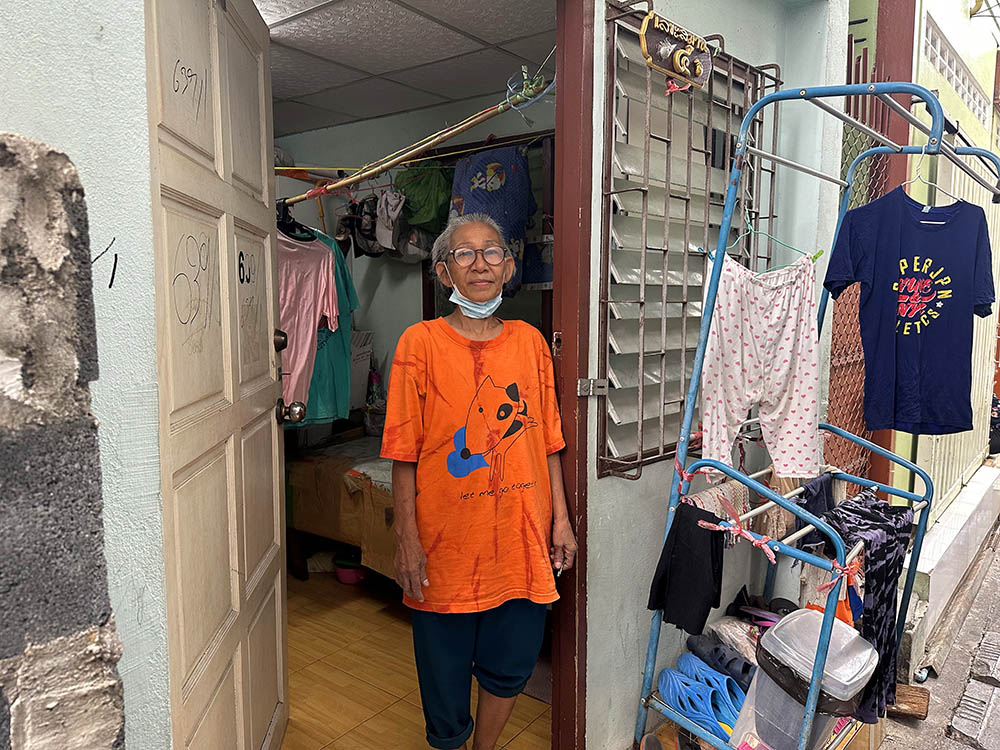
The call went out mid-June, when Meena organized the Hungry Halal Food festival at the mosque’s school where everything was home-cooked in the local style. It brought residents together and raised some money for those in need.
“Our meticulous cooking style is our strength,” Meena said. “Therefore, we are trying to come together so that in the future, we may not have to go sell outside the community. Our village is already beautiful.”
All ingredients had to be hyperlocal. For example, cucumbers and red onions had to be the right size for the region, with sellers encouraged to bring unique recipes.
Meena said Baan Kruan cuisine can be traced back to the community’s 17th century origins in the Rattanakosin era. Their distinctive Khmer Beef Red Curry is something Meena says cannot be found anywhere else – not even in Cambodia.
“We had a documentarian who went to Cambodia to try the Khmer Beef Red Curry, they said it was spicy,” Meena told Coconuts. “But here, it’s spicy as well as sour, with a tomato and tamarind orange flavor that’s familiar to the Thai palate.”
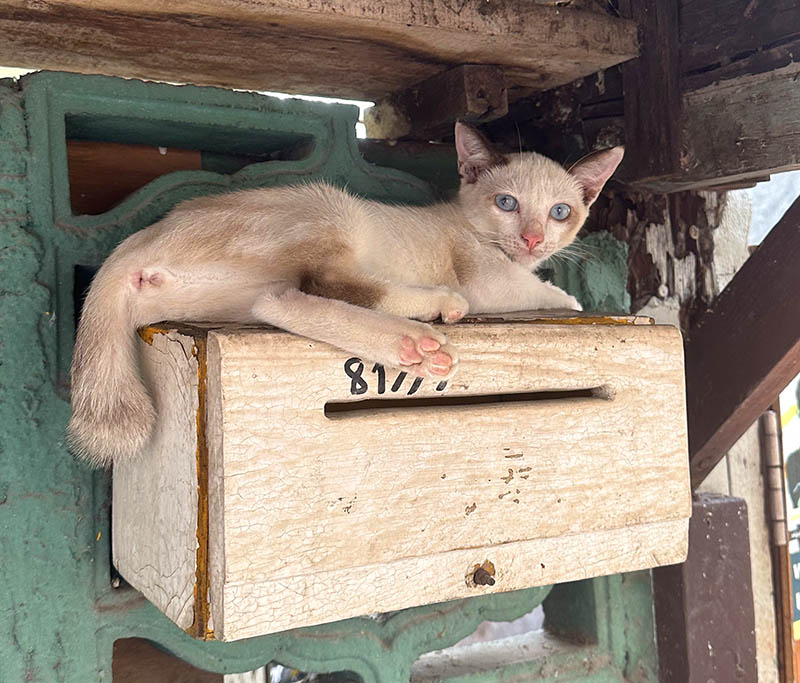
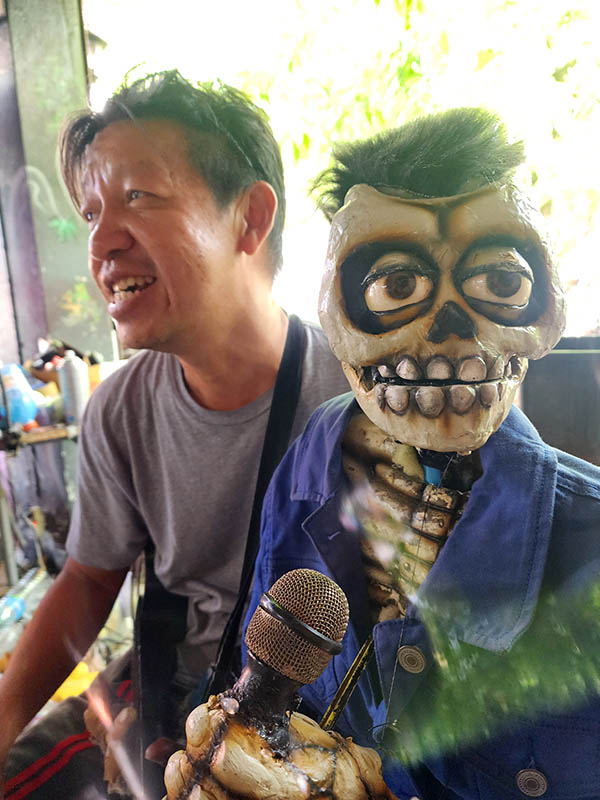
She said one booth sold 1,750 sticks of beef satay between 3pm and 9pm.
Meena hopes that events like Hungry Halal Food will also bring more visitors to check out Baan Krua’s culture and way of life.
“Through the fest, I want people to know the food of Baan Krua means decorative dishes and Halal cleanliness. The event was successful, we didn’t expect it would bring large crowds of people, and it had a good atmosphere because it was at night.”
She said to keep an eye out on the community’s page to see when they organize the next, which she hopes will be monthly or even weekly, if they get enough support and interest.
Until then, where to try homemade, Baan Krua-style food? While there aren’t any restaurants serving it daily, Meena hopes to establish a hawker center in front of the mosque as soon as next month.
Getting there
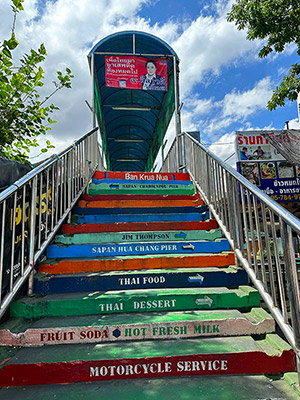
Baan Krua is best accessed on foot. From BTS National Stadium, take exit No. 1 and walk west to Soi Kasem San 2. Follow the signs to the Jim Thompson House. From there, walk west along the canal to the footbridge over the Khlong to Baan Krua North. Exit BTS Ratchathewi’s exit No. 1 and take Soi Phaya Nak to Soi Phetchaburi 12. Turn left.
It can also be reached by boat. The Khlong Saen Saep boat service stops at the Baan Krua North pier.
